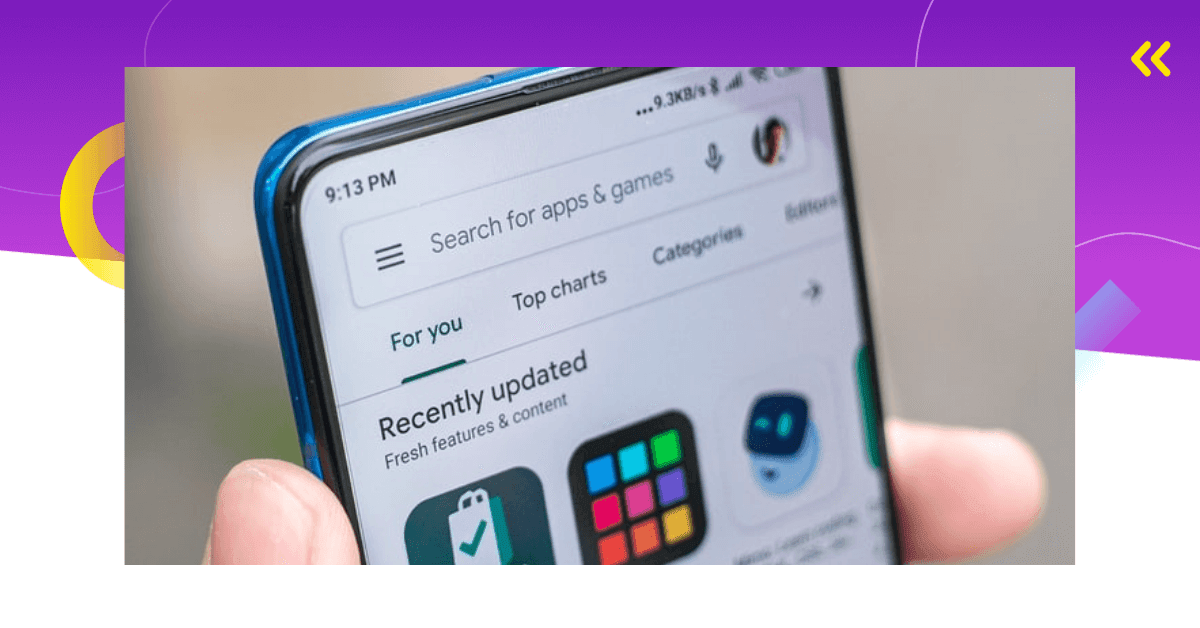So, you’ve decided to monetize your app with in-app advertising. You know you need to pick out an app monetization platform, but the choice seems overwhelming?
Let me help you with that.
In this blog post, I will go over all the things you need to pay attention to when picking out an app monetization platform.
Preparing for Ad Monetization
In-app advertising is the most popular app monetization strategy there is. Today, 63% of all publisher revenues come from in-app advertising (AdColony).
By displaying ads, developers make money, and the app remains completely free for users to install and use.
This may sound like a simple process, but it’s not.
First and foremost, to earn money from in-app advertising, app publishers need large userbases. This means they need to track down the right type of users and acquire them at a reasonable cost.
Next, they need to retain users. On average, about 49% of users leave an app on the first day of using it (Adjust). This happens for a number of reasons. Some of them are the quality of the app, intrusive advertising, poor ad experience, etc.
In a lot of cases, user churn happens because of not-so-good ad experiences.
One of the things you can do to minimize the risk of this happening is to choose the right monetization platform for your app.
Choosing an App Monetization Platform: Factors to Consider
There is no such thing as a one-size-fits-all app monetization platform. The platform you choose will depend on your app type, monetization goals, your users, and many other factors.
Let’s take a look at all these factors in more detail.

1. Suitability for Different App Types
Your app type is a significant factor in choosing an app monetization platform. The thing is, different types of apps are used in wildly different ways.
Let’s take a utility-type reminder app as an example.
Users frequently use these kinds of apps, but their sessions are very short. They will open the app, use it for the task they want, and exit it in a matter of seconds.
Gaming apps are a completely different case. Let’s exemplify with a hyper-casual game.
When players launch a hyper-casual game, they will probably play it for a couple of minutes. This is frequently done to kill time in certain situations. For example, in a doctor’s waiting room, on the toilet, etc.
My point?
These two app types have different monetization goals. You need to select a monetization platform that can help you optimize in-app advertising to your app’s specific needs and demands.
Some app monetization platforms promise they can do this for all app types, while others are focused on particular app categories.
For example, Unity Ads is a game-centric app monetization platform. One of its key features is targeting users interested in a specific game type. Therefore, if you have a non-gaming app, you should probably consider other ad monetization platforms before this one.

2. Ad Formats It Supports
When you decide to have ads in your app, you have plenty of options to do so. There are different ad formats for you to choose from.
Some of the most popular ad formats for mobile apps are banner ads, interstitial, rewarded video ads, native ads, and offerwalls.
Some of these are simpler to integrate (e.g., banner and interstitial ads), while others are more interactive and engaging (e.g., rewarded video ads). Based on their characteristics, these ad formats have different money-making potential (eCPM rates).
You don’t even need to decide on one ad format – your app can deliver different kinds of ads.
However, you should be aware that not every app monetization platform supports every ad format. For example, not all platforms support rewarded video ads. Finding a platform that supports offerwalls can be even more challenging.
If you want your app to deliver interactive ad formats, you need to make sure that the ad monetization platform you choose supports them.
In this step, you should consider the ad formats your app is using at the moment, but also the ones you plan on using in the future. For this reason, you should make sure that the platform you’re choosing is up-to-date with the latest trends and innovations.
3. Type of Monetization Integration
Another factor you need to consider is how the platform’s ad server integration works.
Some ad networks only provide client-side hosting, while others offer server-to-server connectivity.
The two principal tools app monetization platforms use to achieve integration are API and SDK. They have a lot in common, and both can be confusing.
Simply put, API is an interface that allows two platforms to interact with each other. On the other hand, SDK is a set of software development tools.
Essentially, API acts as a bridge between two platforms. It is simple to integrate, but it comes with limited functionalities.
SDK is more robust and brings a more expansive set of tools (e.g., re-engagement, analytics).

4. How It Chooses Which Ads to Display
Have you ever seen apps with poor-quality ads that completely ruin the user experience? I know I have.
This is a costly mistake you can avoid making.
It all comes down to one thing – how the app platform determines which ads to show.
Most frequently, ad networks or ad exchanges determine which ad is the best choice for a particular group of users. They rely on AI, also known as programmatic advertising.
By definition, programmatic advertising is an automated way to sell and buy ad inventory.
This term includes the two most popular methods for buying and selling ads – the waterfall model and in-app bidding. The waterfall model is considered the older, traditional way, while in-app bidding is relatively new.
Waterfall has been the standard for over a decade, and many ad networks still rely on this technique.
In the waterfall, the ad server calls ad networks in a predetermined order, one by one. This order is based on historical data. Ad requests then go down the list until one of the ad networks meets the price floor.
This model has a couple of drawbacks. With it, publishers are potentially missing out on revenue. Plus, it can lead to low ad fill rates and latency.
For this reason, more and more publishers are turning to solutions that rely on in-app bidding.
In-app bidding allows publishers to offer inventory to all potential bidders – it works like a unified auction. In it, advertisers bid for ad space in real-time, and the higher bidder wins.
This type of bidding was created to resolve the issues surrounding waterfall bidding. However, since the concept is relatively new, in-app bidding solutions are still a “work in progress”.

5. Ad Networks and Ad Exchanges It Works with
When you visit a website of any app monetization platform, you will see a list of ad networks it works with.
This is something you need to pay attention to.
Ad networks connect advertisers and publishers and make ad serving possible. Different ad networks work on different principles and are able to achieve different results.
This is important not only for the advertisers but also for you, the publisher.
Make sure the app monetization platform you’re picking out works with some of the world’s leading ad networks. In this article, you can find a list of the leading ad networks based on different criteria.
No, the platform doesn’t need to work with all of the world’s leading ad networks. However, it is desirable that it includes at least several established ad networks.
Making a bad choice can have an influence on your users’ in-app experiences, and consequently, your revenues.

6. Services it Brings to the Table
Some app monetization platforms offer specific services only, while others work as one-stop solutions.
For example, a full-service app monetization platform will provide its own ad network, but also an ad mediation platform.
Ad mediation platforms work as mediators between app publishers and multiple ad networks. They allow publishers to work with various ad networks while integrating only one SDK.
This is an important point. The thing is, having too many SDK integrations can negatively affect an app’s performance. For example, they can slow it down and cause different irregularities.
Generally, it’s not a good idea to rely on a single ad network for ad monetization. This can leave a lot of your ad space unfulfilled. Then again, manually keeping track of results on multiple ad networks is difficult.
Ad mediation platforms help solve this problem as well.
In just one dashboard, you should be able to see all important data related to ad revenue for your app, regardless of how many ad networks you’re utilizing. This will help you save time and potentially increase your ad revenue.
Some app monetization platforms that offer ad mediation services are ironSource, AdMob by Google, and Mopub.
Ad mediation is not the only service you can expect from an app monetization platform. Other services you should look for in full-service app monetization platforms are:
- Tools for A/B testing ad monetization strategies
- User-level ad revenue data
- Extensive reporting

7. Cross-Promotion Opportunities
Finding the right users for your app is a challenging, never-ending process.
For this reason, some app monetization platforms don’t handle only monetization but can also help you acquire more users.
They do this by offering cross-promotion services.
If you have multiple apps, this is something you should look for in an app monetization platform. Cross-promotion is a method of keeping users in your portfolio. It allows you to market your apps to your users across your apps.
Cross-promotion is not only a user acquisition feature but also a monetization feature.
For UA purposes, it runs campaigns just like any other user acquisition campaign, relying on CPI bidding and ROAS optimization.
For monetization purposes, cross-promotion is automatically optimized and works on the principle of in-app bidding.
8. Time and Experience in the Business
A lot of app monetization platforms will create PR lines in which they characterize themselves as experienced, and leading.
This can turn out to be a complete lie.
For this reason, you should do your own research on the app monetization platform you’re considering. You should look at how long it has been in the business and how financially stable it is.
No, I’m not saying you should not even consider new market entrants. There are many innovative startups out there that can become the next big platform. Being among their first clients can potentially bring you a head start on the competition.
I’m just saying you should be careful and consider the platform’s offerings but also look for proof of their claims.

9. Customer Support & Reviews
You may think to yourself, “Well, this goes without saying.” You probably believe that, nowadays, all tech tools on the market should provide quality customer support.
I believe this too.
Yet, there are so many situations where customer support has let me down.
At some point, you’re probably going to face some issues with app monetization. Make sure that, when this happens, you have someone to turn to.
Some monetization platforms on the market don’t even have dedicated customer support. Some have it, but it’s slow and inefficient. You don’t want to end up collaborating with such platforms.
For this reason, you should ask about the support details before you even sign the contract.
Moreover, it’s beneficial to know what other app publishers and developers have to say about the platform. You can learn this by checking the platform’s reviews on independent review sites.
Wrapping up on Choosing an App Monetization Platform
As you can see, when it comes to app monetization, there are a lot of things you should be thinking about.
Only when you know that you have a trustworthy partner can you be sure that you’re not leaving money on the table.
Want to read more about app monetization? Make sure to check out other articles on our blog. Also, subscribe to our newsletter!






![Top 11 Mobile Intelligence Providers [Pricing Included]](/static/0e4f14bdef6ce961ec3302e21c4bf275/0ccb9/mobile-inteligence-providers.png)
Comments